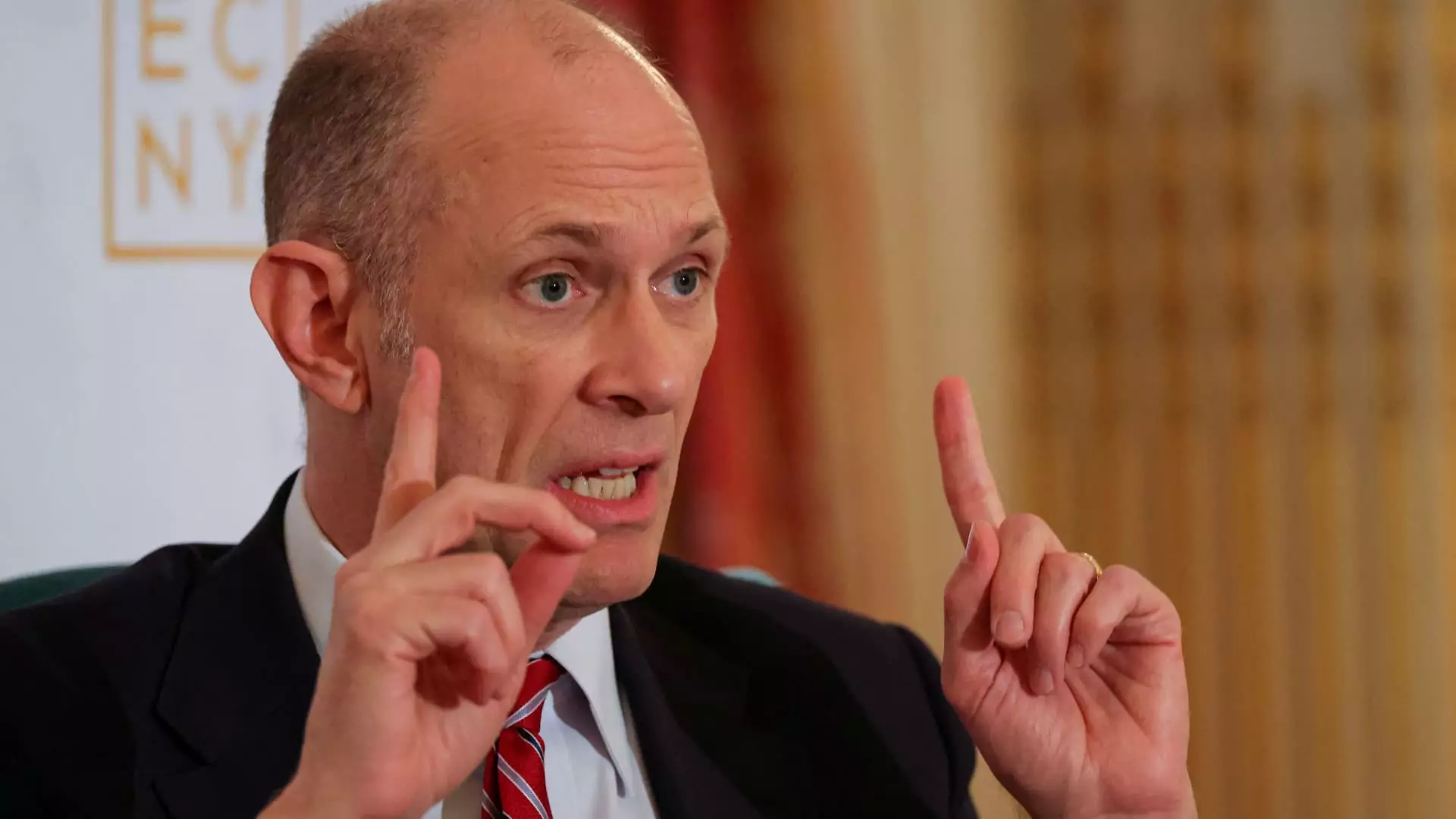The announcement of impending tariffs can send tremors through the economy, and recent comments by Austan Goolsbee, President of the Chicago Federal Reserve, epitomize this reality. While discussing President Trump’s latest tariff threats, Goolsbee hinted at a potential stagnation in interest rate changes, illustrating the ripple effects of unpredictable trade policies. The Federal Reserve prides itself on being an anchor in turbulent economic waters, yet this increasing volatility in trade relations makes its tasks more complex. Like a ship navigating through stormy seas, the Fed must constantly adjust its course based on shifting winds of political decisions.
As tariffs loom, the expectation of inflation rises, prompting central bankers to tread carefully. Goolsbee emphasized the need for clarity amidst the chaos; a prudent stance as sudden tariff implementations can lead to stagflation—a nightmare scenario for any economy. This delicate balance between fiscal responsibility and stimulating growth becomes harder to manage when faced with the unpredictability of trade threats. The implications extend beyond mere market turbulence, resonating through the pockets of everyday citizens.
The Cost of Tariffs: A Hidden Tax on Consumers
Tariffs, often viewed as a politically savvy maneuver, translate to higher costs for consumers. Goolsbee’s comments on increased tariffs on products from the European Union and Apple’s devices illustrate this directly: these costs generally don’t vanish; they are simply transferred to the American consumer. When the price of an iPhone increases by 25% due to tariffs, it becomes less about corporate profits and more about the average family’s budget. Such developments are not merely economic statistics; they affect real-life decisions about spending on essentials versus luxuries.
In a nation struggling with inflationary pressure, these additional costs can devastate consumer confidence and spending habits. It’s a misstep to assume that consumers will simply absorb these expenses without any repercussions. Every dollar spent on inflated prices means less disposable income for families, reducing their ability to contribute to the economy. Thus, while tariffs may be framed as a strategy for negotiation, their tangible impact is detrimental at the ground level, further complicating an already fragile economic landscape.
The Fed’s Dilemma: Balancing Act or Tightrope Walk?
The Federal Reserve finds itself in an increasingly precarious position as it attempts to maintain economic stability amid persistent tariff threats. The task of predicting interest rate adjustments grows murky when policymakers must weigh the ramifications of fiscal strategies against broad economic indicators. Goolsbee’s comments reflect a sense of caution—a desire to pause and assess the ecosystem before making bold moves. However, this wait-and-see approach risks stagnating growth at a critical moment.
Moreover, the central bank’s reluctance to commit to action heightens market uncertainty. If rates are kept on hold while inflation creeps up due to tariff-induced price increases, the risk of losing public confidence in the Fed increases. Many people are skeptical about the bank’s ability to manage inflation efficiently—especially when external factors such as trade policies come into play. As a result, Goolsbee’s measured rhetoric underscores the fragile equilibrium that the Fed must maintain.
Looking Ahead: The Optimism Amid the Uncertainty
Despite the chaos, there is an underlying optimism in Goolsbee’s analysis, suggesting that the longer-term trajectory may still favor economic growth. The notion that interest rates could decrease in the coming months hints at a willingness to pursue a path less encumbered by immediate political noise. However, this optimism hinges on external stability—a condition that is becoming increasingly rare.
For many center-right observers, the expectation that economic policies will lead to substantial growth feels more like hopeful speculation than a robust plan. The reality is that the market requires a certain degree of reassurance from policymakers. If the Fed can successfully navigate the tumultuous waters stirred by trade threats, it could emerge as a stabilizing force. But this requires decisive action, not indecision wrapped in cautious rhetoric. After all, in the realm of economic governance, action often trumps inaction, especially when confronting the specter of inflation and unpredictable trade relations.
In navigating this landscape, the Fed must find its voice amidst the din of tariffs and trade issues.

